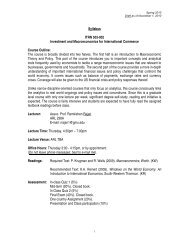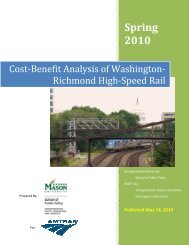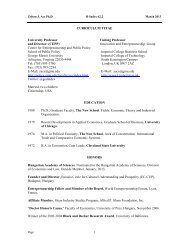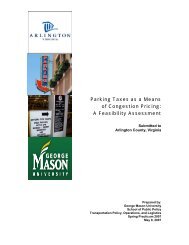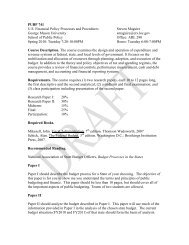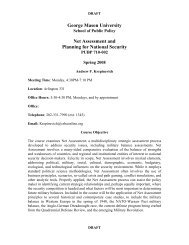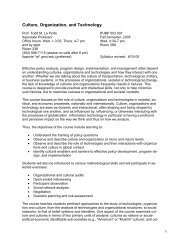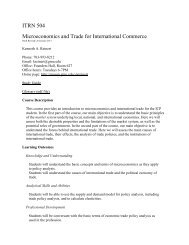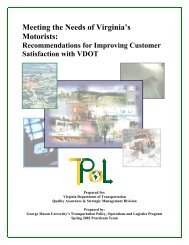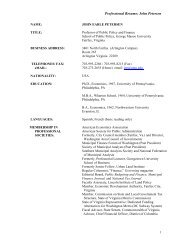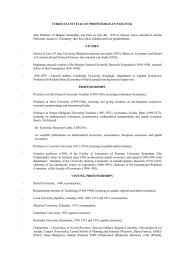Coordinating critical transportation infrastructure vulnerability
Coordinating critical transportation infrastructure vulnerability
Coordinating critical transportation infrastructure vulnerability
Create successful ePaper yourself
Turn your PDF publications into a flip-book with our unique Google optimized e-Paper software.
Although the products contained in this report focus on the individual needs of WMATA, each has<br />
been structured to enable use by other transit properties and service providers from other modes –<br />
all of which will help to meet the requirements of the Homeland Security Act of 2002.<br />
1.4 REPORT SUMMARY<br />
Section Two provides a brief overview of the <strong>transportation</strong> systems in the National Capital Region.<br />
For the purposes of this report this summary focuses on Passenger Rail and Railroads, Highways,<br />
Trucking, Busing, and Mass Transit – as designated in the National Strategy for the Physical<br />
Protection of Critical Infrastructures and Key Assets. Section Three provides a summary of<br />
<strong>vulnerability</strong> self-assessment tools that show potential for use in the National Capital Region.<br />
Section Four of this report provides a detailed summary of the <strong>transportation</strong> security and<br />
<strong>vulnerability</strong> assessment activities previously initiated in the National Capital Region. This section<br />
also provides an analysis of how the work contained in this report supplements work previously<br />
completed. Section Five provides a “hybrid tool’ that may be used by WMATA and other<br />
<strong>transportation</strong> service providers in the National Capital Region to conduct <strong>vulnerability</strong> self<br />
assessments. Section Six provides various methodologies for regional prioritization of needs<br />
identified by an agency. Section Seven provides key findings for the project and recommendations.<br />
Appendix A provides a brief summary of the self-assessment tools that were evaluated. Appendix B<br />
defines the criteria that was used to evaluate the self-assessment tools. Appendix C contains the<br />
hybrid <strong>vulnerability</strong> self-assessment tool.<br />
1.5 ACKNOWLEDGEMENTS<br />
Critical to the success of this report is both the leadership and direction of WMATA representatives<br />
Debbie Lippman, Director, Office of Intergovernmental Relations, and Fred Godine, Asssistant<br />
General Manager, System Safety and Risk Protection. Activities undertaken during the development<br />
of the report have been coordinated with Ms. Lippman and Mr. Godine to best meet the needs of<br />
WMATA in conducting <strong>vulnerability</strong> self-assessments.<br />
PUBP 710/722 Page 9 of 60<br />
WMATA Case Study June 5, 2003



